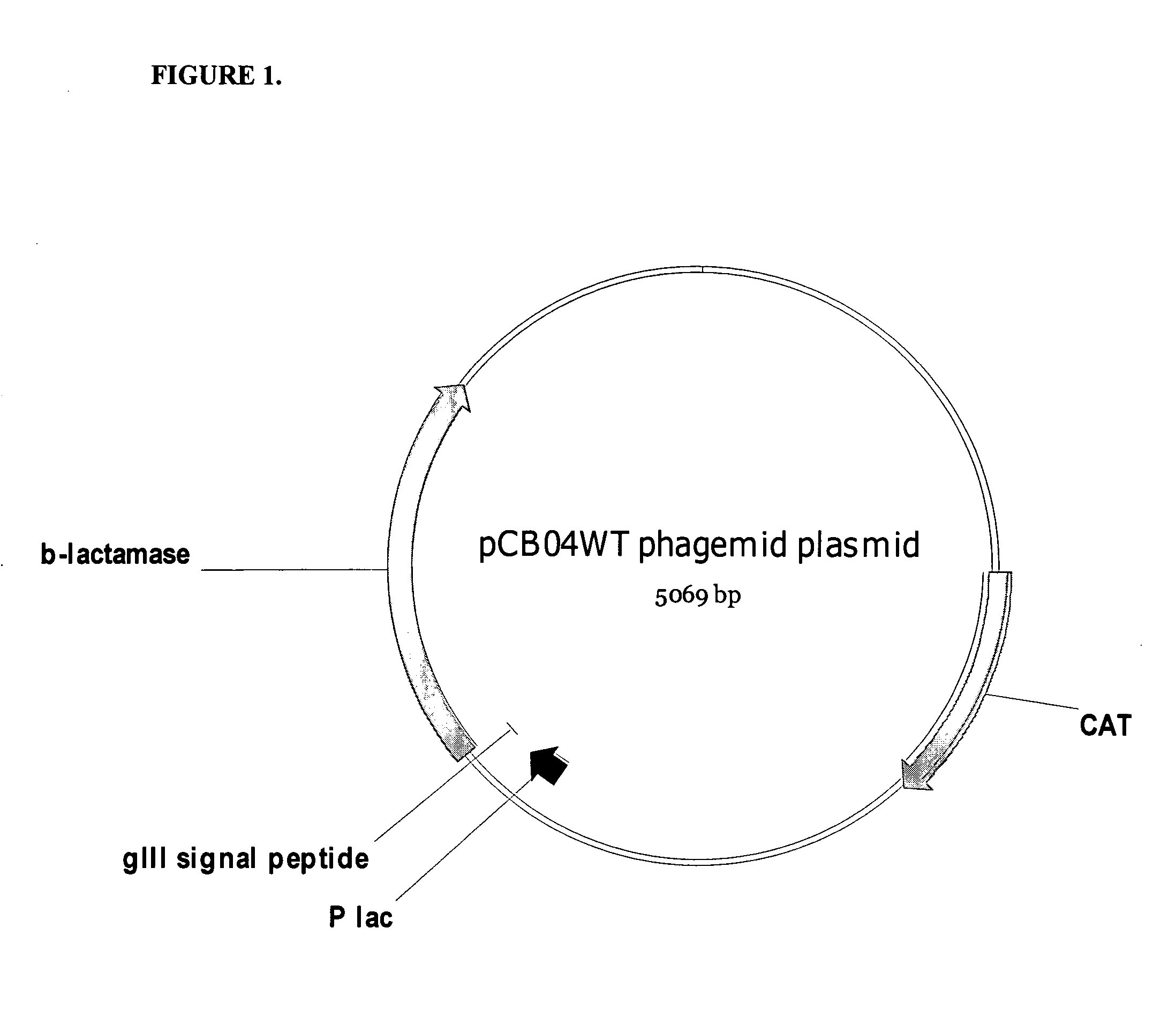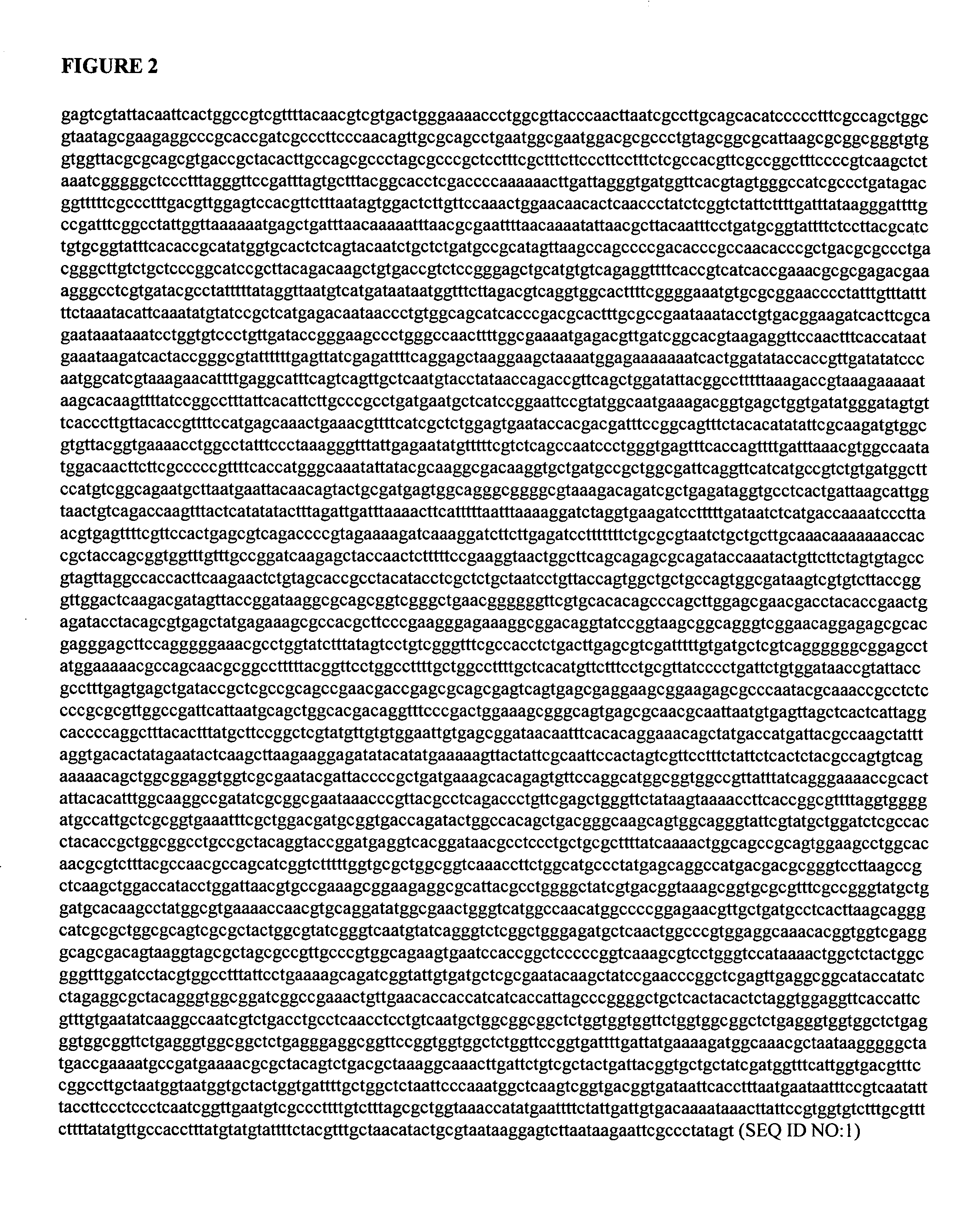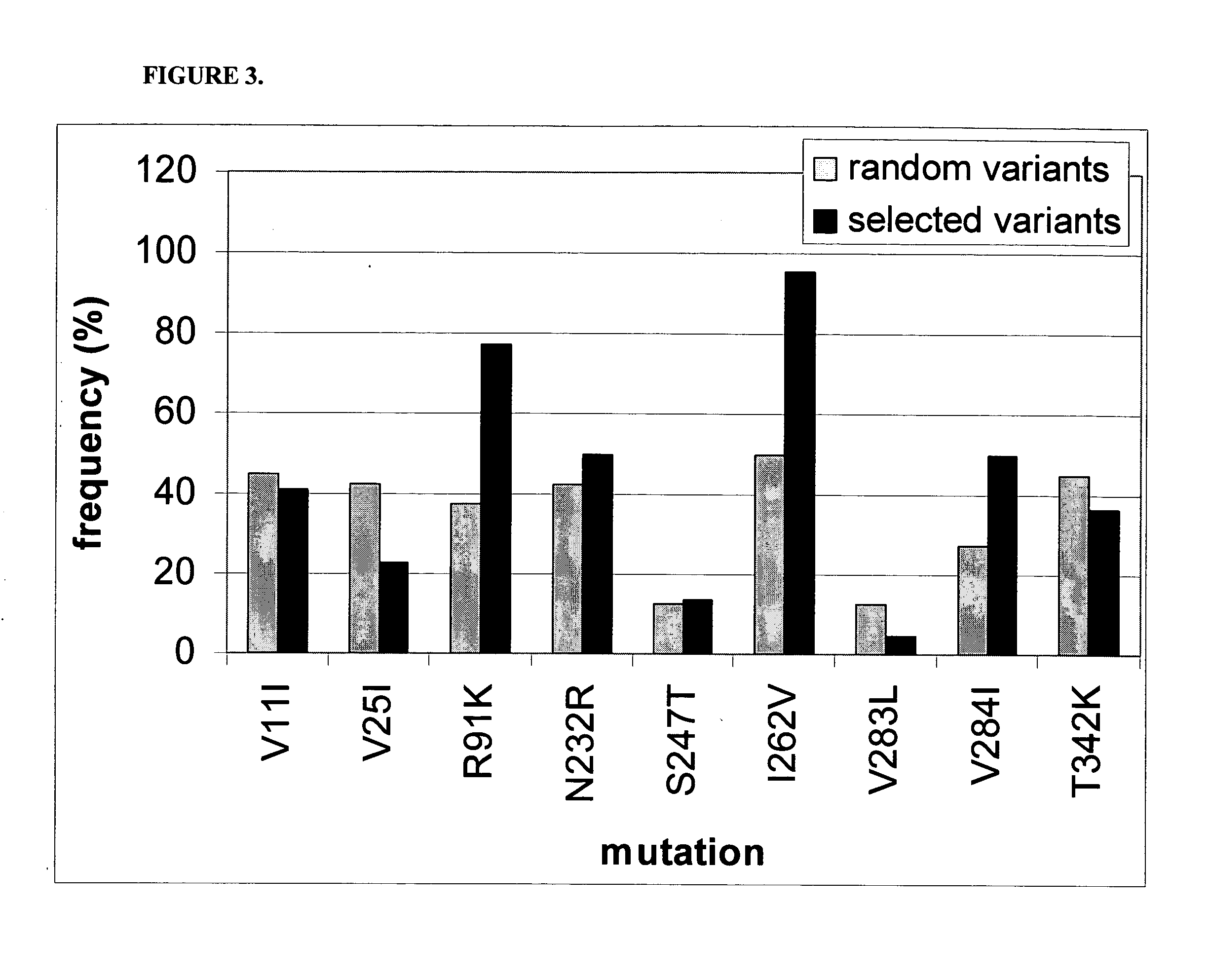Generation of stabilized proteins by combinatorial consensus mutagenesis
- Summary
- Abstract
- Description
- Claims
- Application Information
AI Technical Summary
Benefits of technology
Problems solved by technology
Method used
Image
Examples
example 1
Combinatorial Consensus Mutagenesis of BLA
[0074] In this Example, the use of combinatorial consensus mutagenesis with beta-lactamase (BLA) is described. These experiments were performed using plasmid pCB04 which directs the expression of beta-lactamase (BLA) from Enterobacter cloacae. BLA expression is driven by a lac promoter. The protein is secreted into the periplasm of E. coli, as it contains a leader peptide from the pIII protein of bacteriophage M 13. The BLA gene is fused to a gene coding for the D3 domain of the pIII protein of bacteriophage M13. However, there is a amber stop codon located between both genes and consequently, TOP10 cells (Invitrogen,) carrying the plasmid express BLA and not a fusion protein. Expression of BLA from plasmid pCB04 confers resistance to the antibiotic cefotaxime to the cells. FIG. 1 provides a map of plasmid pCB04, while FIG. 2 provides the nucleotide sequence (SEQ ID NO:1) of plasmid pCB04. Plasmid pCB04 contains the following features:
P l...
example 2
Screening of NA04 for Protease Resistance
[0097] In this Example, experiments conducted to screen the NA04 library for protease resistance. In particular, in these experiments, library NA04 was screened to identify variants that resist degradation by the protease thermolysin at elevated temperature. Thermolysin is a thermostable protease which has been found to preferentially cleave unfolded proteins (See, Arnold and Ulbrich-Hofmann, Biochem., 36:2166-2172 [1997]).
[0098] The library NA04 was plated onto LA agar containing 5 mg / l chloramphenicol and 0.1 mg / l cefotaxime and incubated for 30 h at 37° C. Colonies were transferred into eight 96-well plates containing 160 ul per well of LB medium containing 5 mg / l chloramphenicol and 0.1 mg / l cefotaxime using an automated colony picker. For each plate, 8 wells were inoculated, with variant NA03.8 used as control. The plates were incubated for 48 h at 37° C. in a humidified incubator shaker. Subsequently, 70 ul of culture was transferred ...
example 3
Testing the Protease Stability of BLA Variants
[0101] In this Example, experiments conducted to test the protease stability of three BLA variants (NA03.8, NA04.2, and NA04.17) produced in Example 1 are described. As a control, the parent BLA (pCB04) was also tested. The host cells expressing these variants and control BLA were inoculated into 1 L Terrific Broth containing 5 mg / l chloramphenicol and incubated at 37° C. over night. Cells were harvested by centrifugation (6000×g for 15 minutes). The pellets were resuspended in 200 ml of phosphate-buffered B-PER solution (Pierce). The suspensions were shaken for about 1 hour at room temperature until the pellets were solubilized. Cell wall debris and insoluble protein were removed by centrifugation (15000×g for 15 minutes). The supernatants were stored at 4° C., until purification.
[0102] Proteins were first purified using Ni-IMAC (Applied Biosystems). The purification was done on Bio-Cat (PerSeptive Biosystems, Applied Biosystems). A W...
PUM
| Property | Measurement | Unit |
|---|---|---|
| Fraction | aaaaa | aaaaa |
| Fraction | aaaaa | aaaaa |
| Fraction | aaaaa | aaaaa |
Abstract
Description
Claims
Application Information
 Login to View More
Login to View More - R&D
- Intellectual Property
- Life Sciences
- Materials
- Tech Scout
- Unparalleled Data Quality
- Higher Quality Content
- 60% Fewer Hallucinations
Browse by: Latest US Patents, China's latest patents, Technical Efficacy Thesaurus, Application Domain, Technology Topic, Popular Technical Reports.
© 2025 PatSnap. All rights reserved.Legal|Privacy policy|Modern Slavery Act Transparency Statement|Sitemap|About US| Contact US: help@patsnap.com



